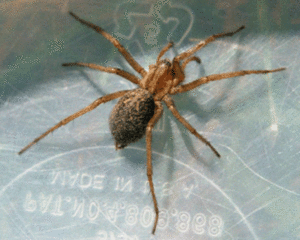 I’ve lived in the Pacific Northwest for the majority of my life, so I’m no stranger when it comes to spiders — especially hobo spiders.
I’ve lived in the Pacific Northwest for the majority of my life, so I’m no stranger when it comes to spiders — especially hobo spiders.
I’ve also lived in basement apartments where I saw even more spiders than usual because it was underground.
Knowing how to identify different kinds of spiders has been important to me for some time.
The hobo spider itself is fairly common. While not fatally poisonous, you still need to watch out for them and keep from being bitten if you can!
Here’s what you need to know about hobo spiders…
Where Hobo Spiders Come From
The hobo spider is native to Europe, but it has migrated to the United States.
It’s not clear is exactly how far into the United States the hobo spider has traveled, but most indicators have it clearly migrating into the northern United States. Parts of Alaska may have hobo spiders as well.
Most hobo spiders made their way to the United States on ships that came from Europe and entered ports like Seattle, Washington and Portland, Oregon. They’ve also been found in some parts of Canada.
The U.S. states that are known to have hobo spiders are:
- Washington
- Oregon
- Idaho
- Montana
- Wyoming
- Utah
- Colorado
Identifying Hobo Spiders
You can identify a hobo spider by its brown color and the chevron markings on its abdomen.
Both male and female hobo spiders have 2 big palpi (or mouth parts). The male palpi appear swollen when compared the female palpi.
Hobo Spider Bites
Keep in mind, spiders in general don’t actively hunt humans. Their only reason for biting you (on the rare chance that you do get bitten) is because they feel threatened.
In some cases, a female hobo spider will bite because she feels her egg sac is being threatened. In the case of a male hob spider, if you corner it or get too close and it feels threatened or if you step on it or roll on it, then you definitely could be bitten.
You’re probably wondering just how venomous hobo spiders really are. To be honest, the jury is still out on this one.
Since it’s so easy to misidentify spiders and there are several spiders that are often mistaken for hobo spiders (like the brown recluse and wolf spider), there is not enough evidence available to answer this question conclusively.
There are reports that some people who’ve been bitten by hobo spiders have had serious wounds that developed necrosis.
If You’ve Been Bitten by a Hobo Spider…
If you’ve been bitten by a male hobo spider (which is more venomous than the female), you will first see a small red welt where the spider bit you. It will eventually grow larger until it bursts — leaving you with an open seeping wound.
Because of this type of deep open wound and the danger of infection, if you think you may have been bitten by a hobo spider, you need to seek medical attention right away. This is true especially if the little red welt or bump gets bigger and then turns into a blister.
Other physical symptoms associated with hobo spider bites include severe headaches and nausea, as well pain at the bite site.
Interestingly, about 50% of hobo spider bites contain no venom at all; they are dry bites. In that case, once the little red welt appears, you may mistake it for a mosquito bite. It will soon go away, and that will be the end of it.
If at all possible, try to catch the hobo spider so you can take it with you to the hospital or doctor’s office to be properly identified.
Hobo Spider Control
If, by chance, you think you have an infestation of hobo spiders, do not use fumigation to get rid of them! Fumigation rarely, if ever, works.
Doing so could actually cause the hobo spiders to increase in number — because the fumigation will kill all of the other spiders that prey on them (such as the American house spider).
You are better off to use sticky traps to catch hobo spiders. These can last up to 3 months each. Just make sure they are out of the way of children and pets.
And finally, don’t miss these hobo spider myths.
My favorite things to write about are topics that have to do with pregnancy, weddings, saving money, living green, and life with dogs. When I’m not writing, I love to spend time with my husband, read, create 3D artwork and Native American beadwork.







